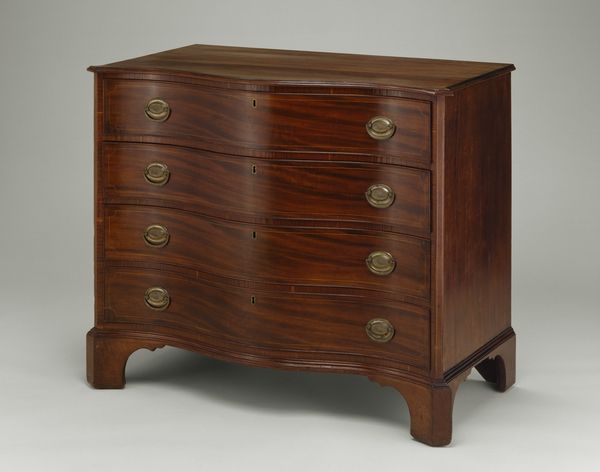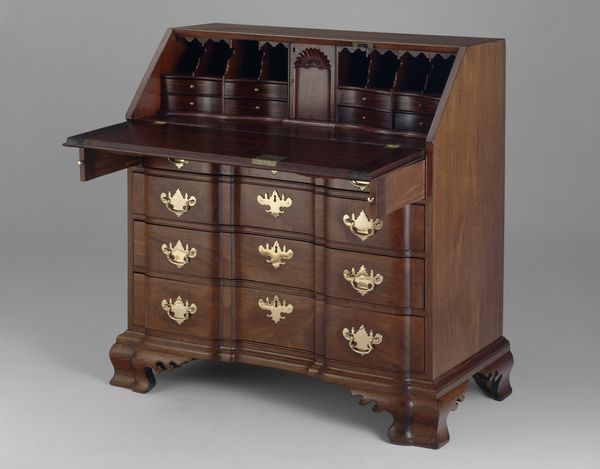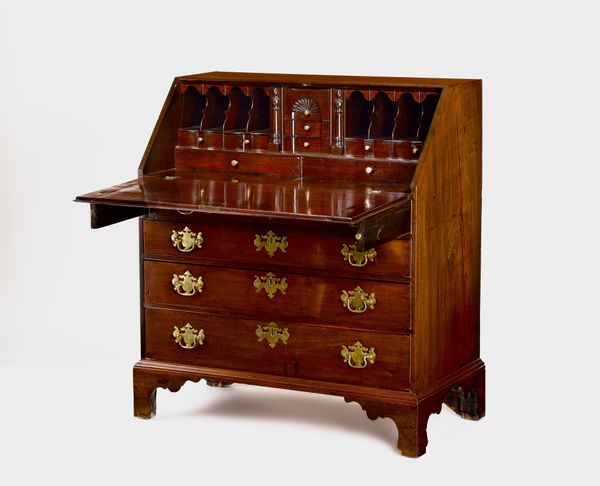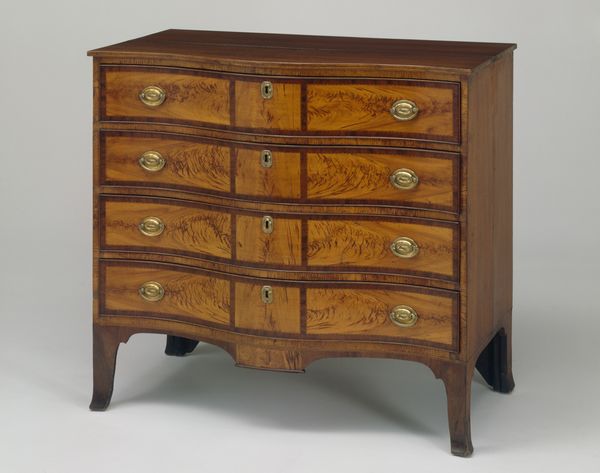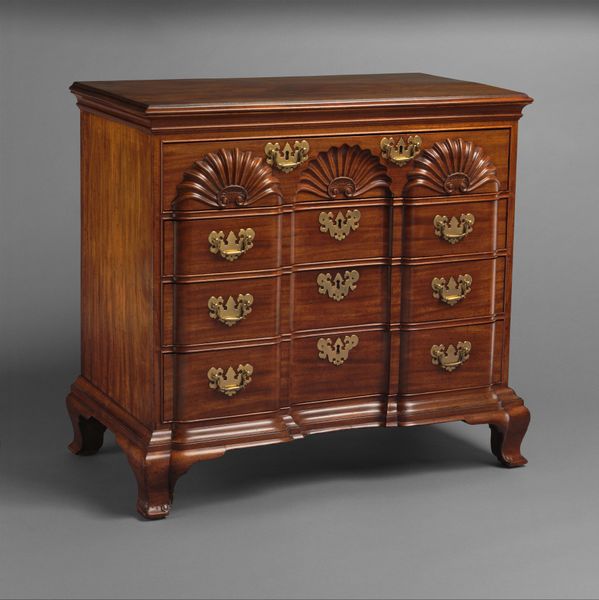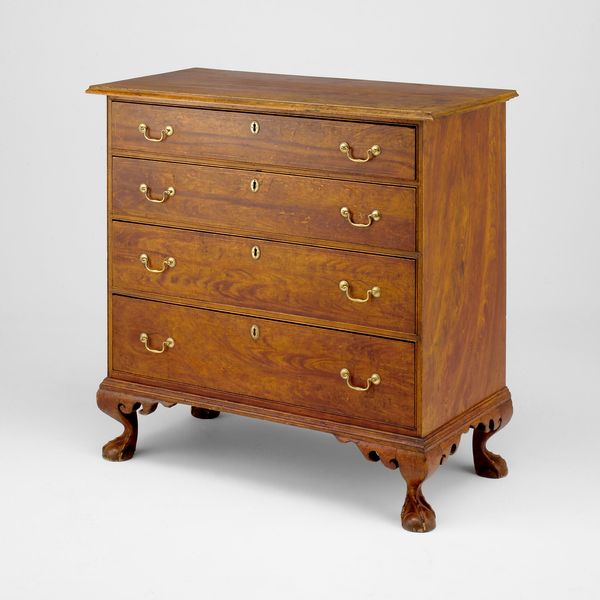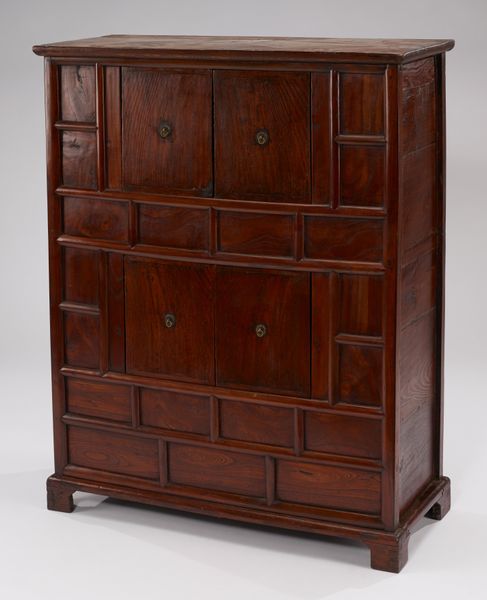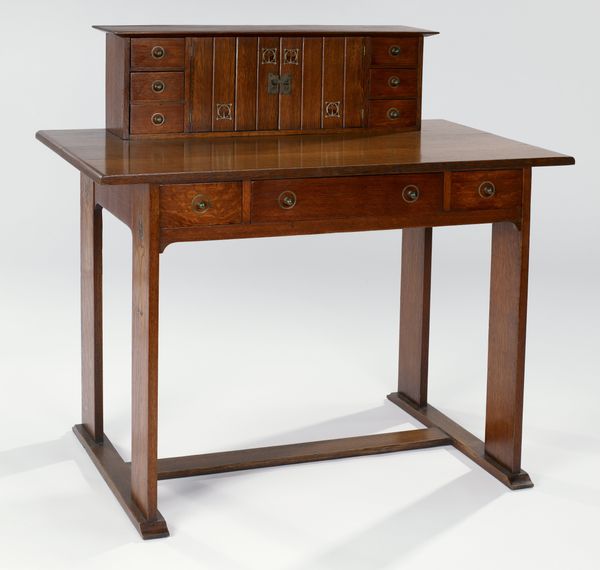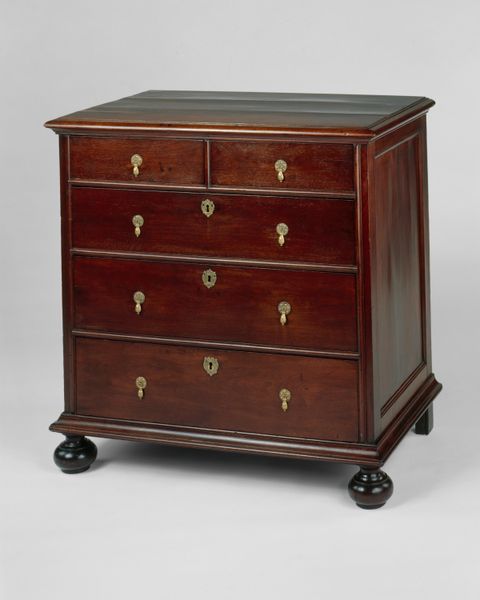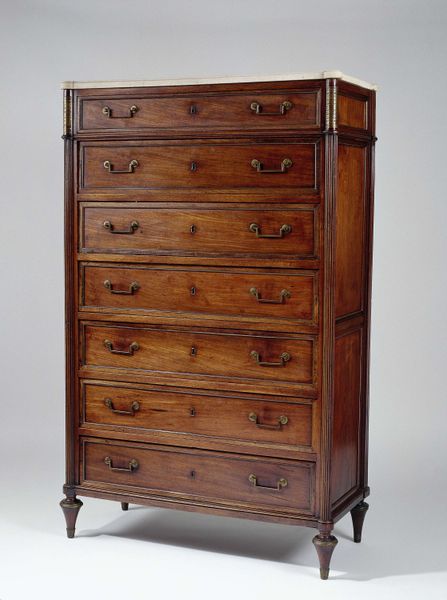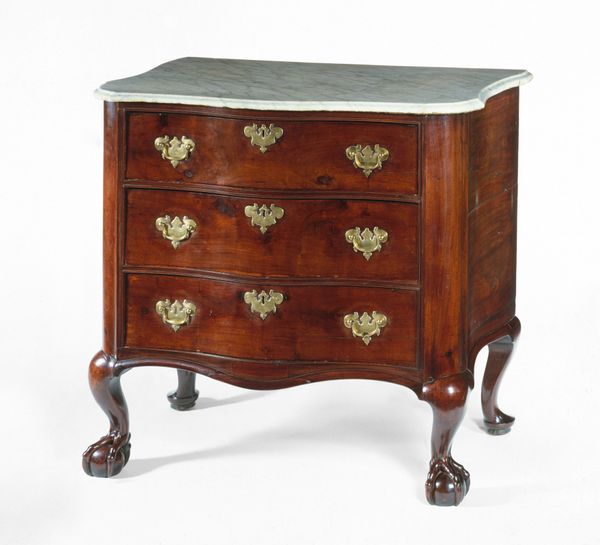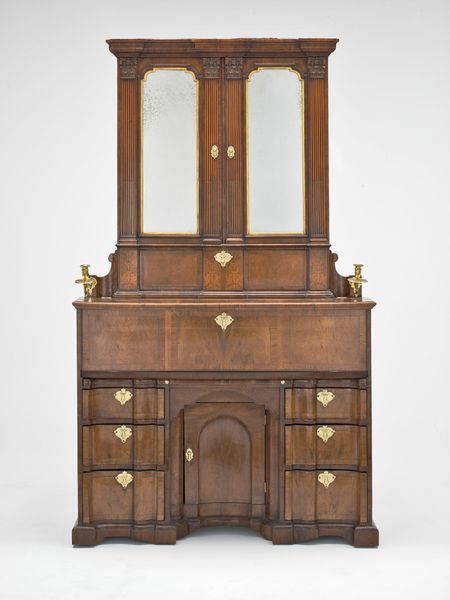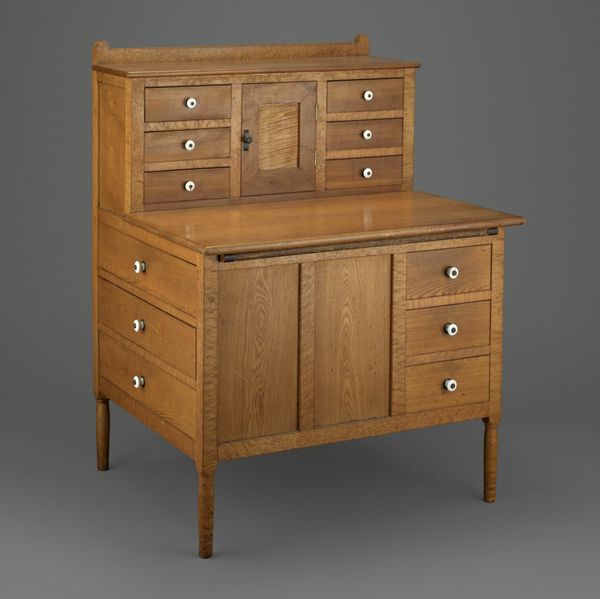
wood
#
wood texture
#
neoclassicism
#
furniture
#
geometric
#
classicism
#
warm toned
#
wooden texture
#
warm-toned
#
wood
#
decorative-art
Dimensions: 112.3 × 107.2 × 52.3 cm (44 1/4 × 42 1/4 × 20 5/8 in.)
Copyright: Public Domain
Editor: Here we have John Bankston's "Cylinder Desk," crafted between 1785 and 1793. The warm wood tones and intricate detailing give it such a stately presence. What historical narratives are woven into a piece like this? Curator: This desk isn't just furniture; it’s a symbol of power and privilege during a time of immense social upheaval. Who do you imagine owned such a piece? Think about the context: late 18th century, revolution brewing. This level of craftsmanship and material luxury speaks to a specific social class, complicit in systems of inequality. Editor: So, owning something like this wasn't just about practicality but also about broadcasting status? Curator: Exactly! The Neoclassical style, with its clean lines and geometric forms, echoes the Enlightenment's emphasis on reason and order. But consider whose reason was valued, whose order was imposed? The desk embodies an ideal of rational governance while being supported by systems of labor and resource extraction that were anything but rational or just. Editor: It's interesting to think about how design choices can mask uncomfortable truths. The desk appears so elegant, yet it represents a complex web of social and political issues. Curator: Precisely. What materials do you see, and what processes and bodies went into extracting, milling, and assembling it? The desk becomes a point of departure for examining those hidden stories, challenging the purely aesthetic appreciation we often bring to decorative arts. How can we engage with its beauty while also acknowledging the conditions that made it possible? Editor: I never thought about furniture this way before! I’ll definitely look at art with a more critical eye now. Curator: Wonderful. It's about seeing art as part of a bigger historical and social landscape.
Comments
No comments
Be the first to comment and join the conversation on the ultimate creative platform.
